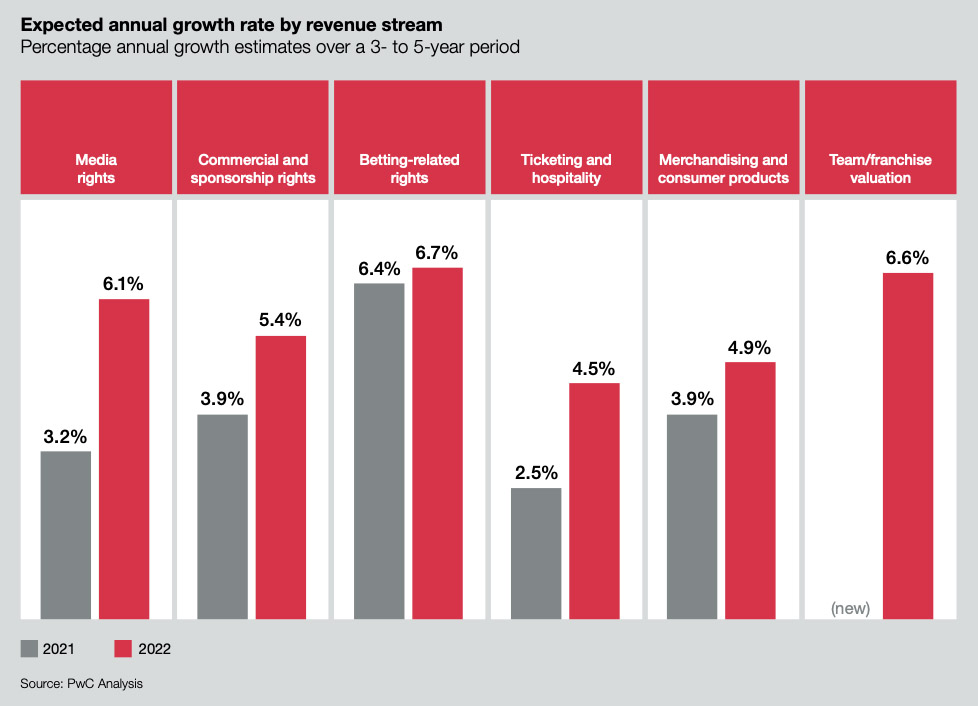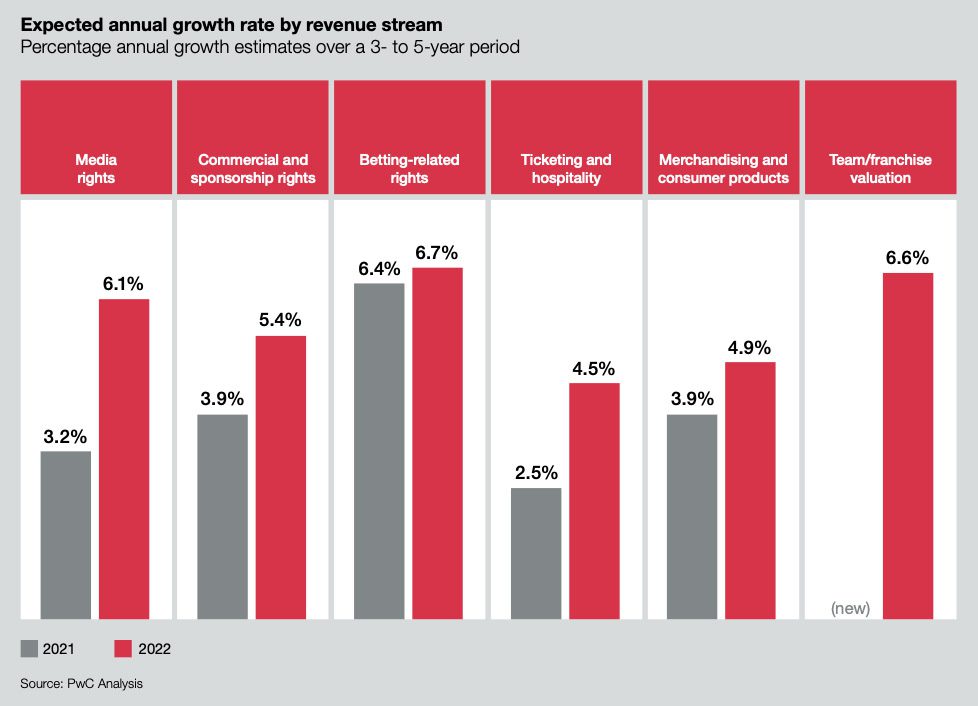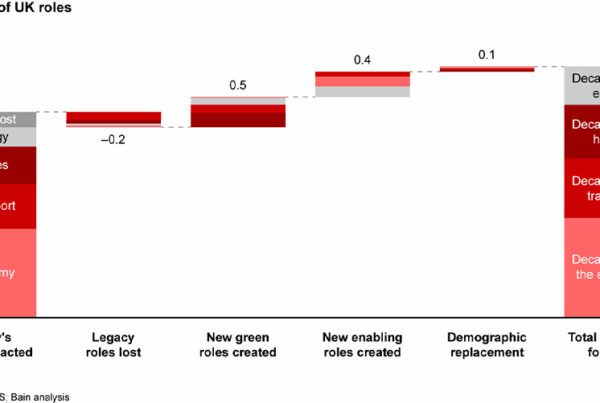Revenues for women’s sports are expected to grow by 15% by 2026, according to a new report. The research signals a huge financial opportunity for companies looking to invest in women’s sports initiatives.
In recent years, women’s sports have enjoyed a watershed moment in several of the world’s largest markets. Despite decades of success, the US Women’s National Soccer Team were paid less than the far-less imperious men’s team – before a landmark settlement and US House bill in 2022 saw it become a requirement to match pay between genders. Meanwhile, in the UK, the success of the Lionesses at Euro 2022 thrust women’s sport into the national limelight in a way that had previously been unprecedented.
Amid these huge changes, the on-field success of women’s sports is also driving financial growth behind the scenes. With growing fan-engagement, broadcasters are airing more games, and opportunities for sponsors are likely to boom, too – further driving the growth trend later on. As a result, PwC anticipates that the market is set to enjoy solid growth over the next three years.

The PwC Global Sports Survey, polled 507 senior sports executives from across 43 countries, and analysed the market forces likely to transform the sports sector over the next three to five years and looks at how those perceptions have changed in the last 12 months. Overall, this found that executives are very positive about the outlook, as they finally look to move beyond the debilitating impacts of the lockdown period, with the outlook for growth improving in the last year from 5 to 6.5%. The key revenue drivers of the improving growth are increased media rights, the resumption of ticketing and hospitality and growing betting related revenues.
Clive Reeves, Global Sports Leader at PwC, commented, “Following a difficult few years due to the Covid-19 pandemic, the sports industry is on the path to recovery and it is great to see in our survey results that the spirit of optimism has returned. With fans now back in stadiums and strong consumer demand for sports content, growth expectations have increased compared to previous years.”
Over a longer period, this outlook became even more sunny. Over 70% of executives believe that revenues will grow by more than 15% in the next three-to-five years. This forecast is supported by the growing interest from media companies and sponsors who are increasingly seeking to realise the opportunities women’s sport offers, with a number of improved partnerships formed in the past year.

The majority of sports executives therefore view the women’s sport market as a critical part of future industry growth. At present, PwC finds that institutional investment is yet to follow this trend – adopting a more cautious wait and see approach. However, with increasing live coverage already widening the reach of women’s sports, commercial partners who act soonest may be priming themselves for greater sales impacts in the future. Among the greatest opportunities, 42% of executives noted that sponsorship could offer greater access to a female audience, and help build positive brand associations.
Reeves, added “Increasing the visibility of women’s sport on high-reach networks can set a powerful flywheel in motion. Extending reach and growing fandom are essential to attract commercial partners and investors who are willing to invest in women’s sport and provide the required financial resources to enable growth at all levels.”
Illustrating this potential impact, there have already been a number of significant investments in sports leagues and teams in the past year by private equity groups and sovereign wealth funds. PwC’s survey reveals that 83% of senior sports executives believe institutional investment like this will continue to grow until 2028.




